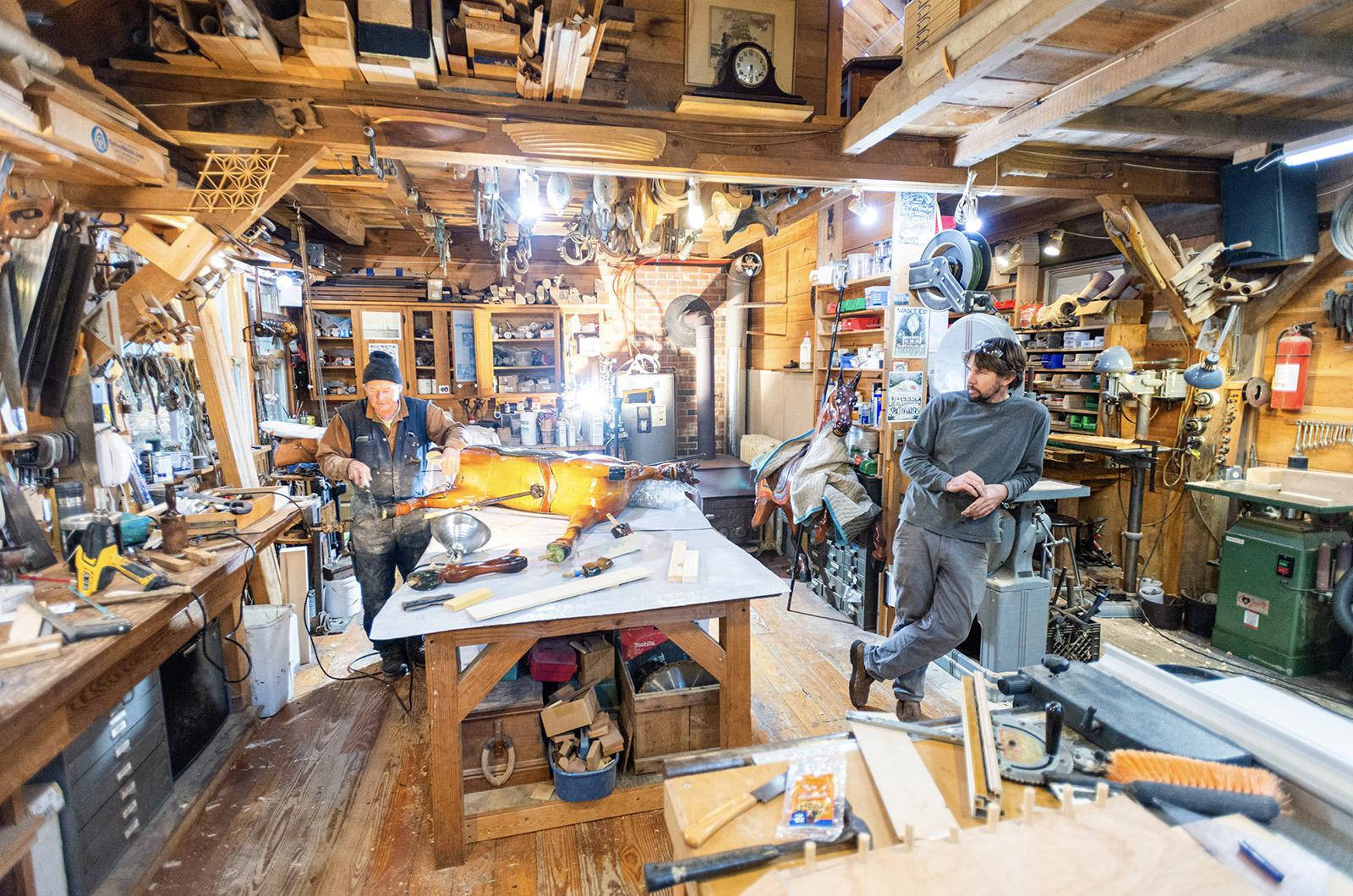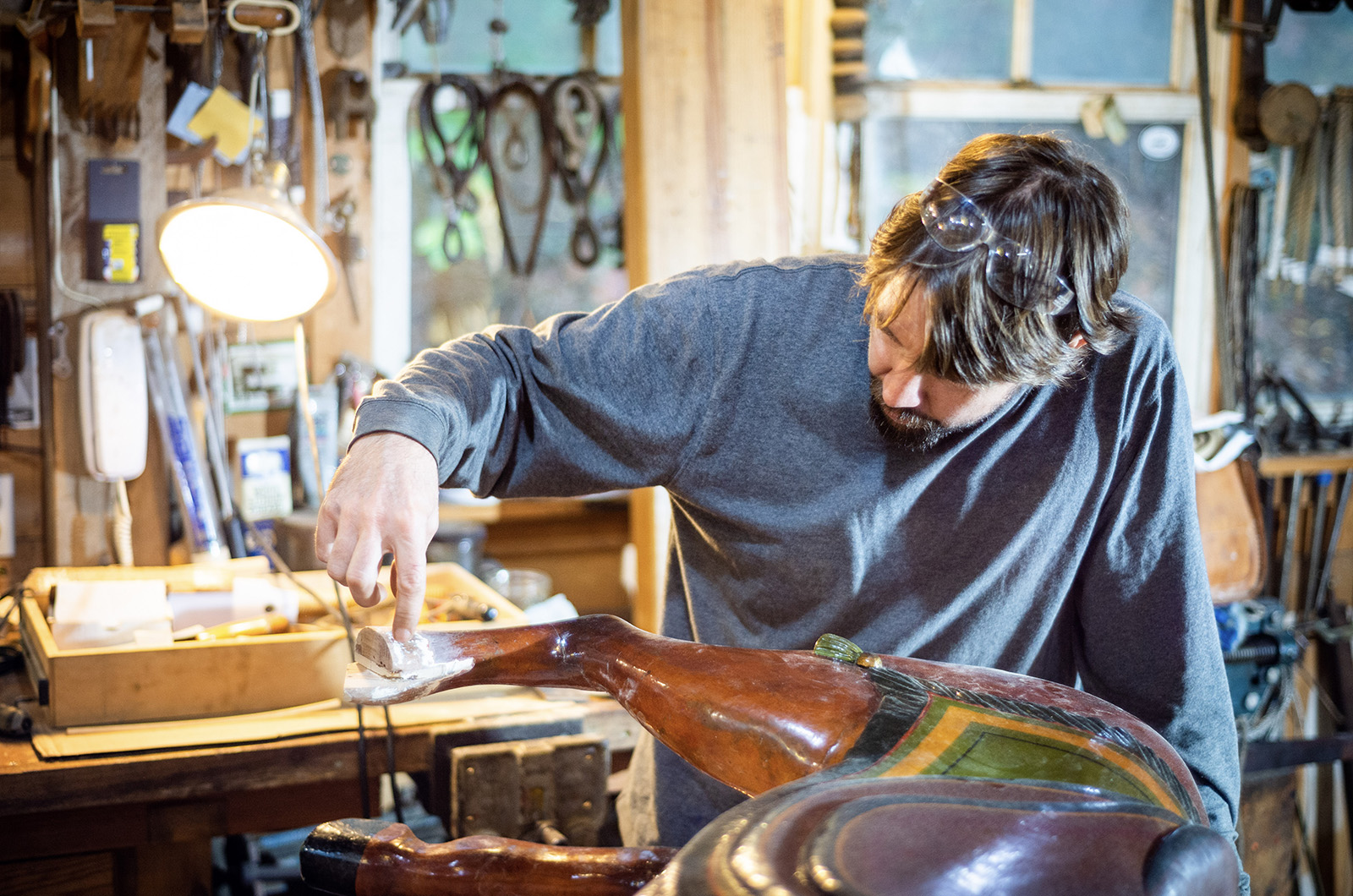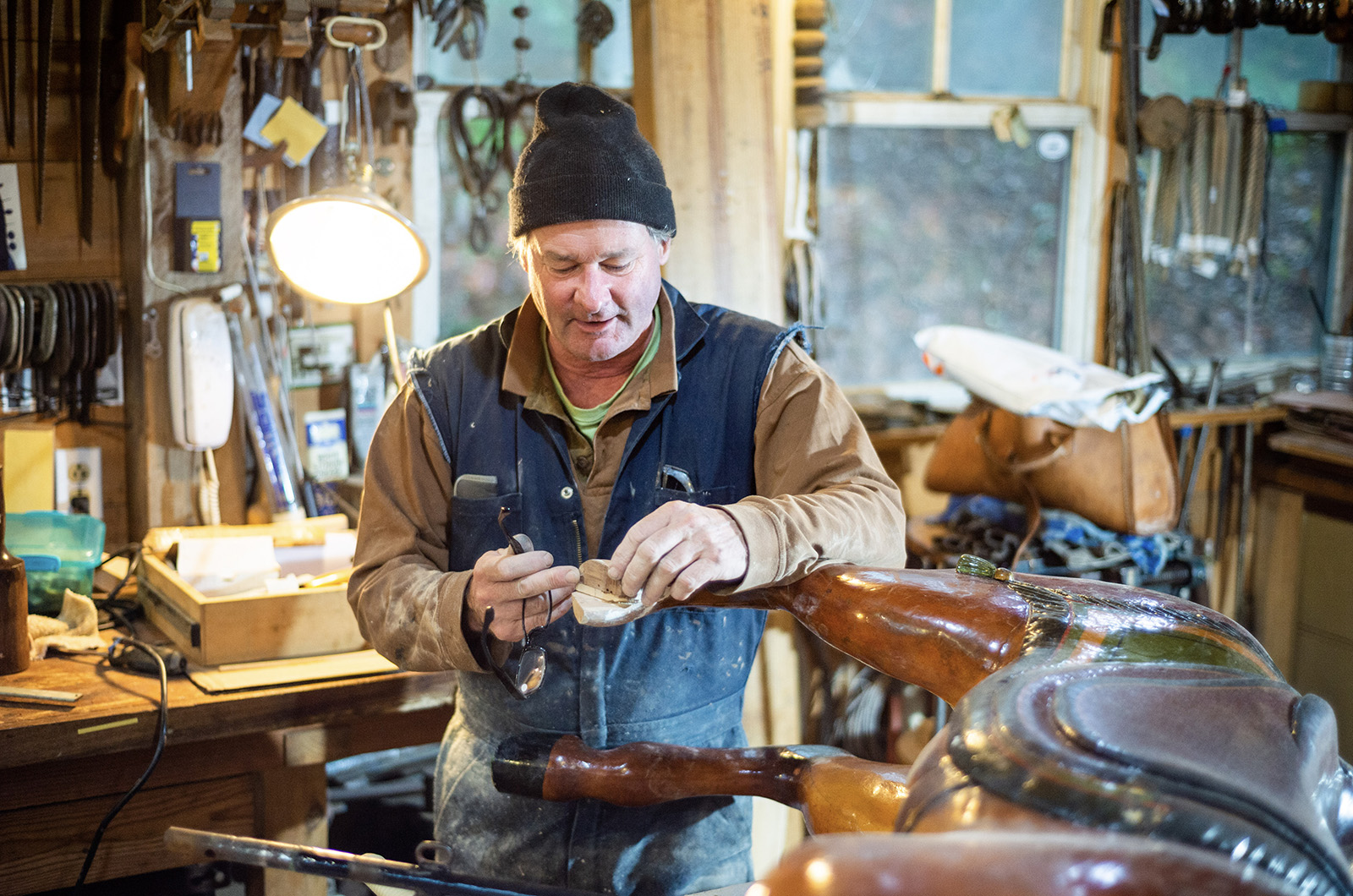Four of the Flying Horses, all injured in service at their eponymous Oak Bluffs carousel, now sit in the woodworking shop of West Tisbury shipwright Myles Thurlow. Each is a prancing model, darkly lacquered, missing one or more of its limbs. The horses seem at home there, lined up in the hall beside bits and pieces of old ships and the new wood destined to fix them.
It has been six years since Mr. Thurlow first began wood restoration on the Flying Horses, a job he said stemmed from a job he did at the Old Whaling Church, another Vineyard Preservation Trust property. Despite all his experience, Mr. Thurlow said the process is still nerve-racking at every step.
“You don’t want to muff it,” he said. “You have to approach it very slow from the start.”
Mr. Thurlow’s charge is a demanding one: restore each damaged horse to its original appearance while maintaining as much original construction as possible. It involves a detailed and deliberate woodworking process, unique to each horse and each breakage.
“We’re lucky that the trust is willing to give us the time to do repairs properly,” he said.
The process begins with a detailed investigation of the damaged area. Constructed by craftsmen in the 1870’s, each horse has its own quirks, however they follow the same general pattern of construction.
“The legs are much like the frame of a boat,” said Andy Lyons, a luthier and fellow shipwright who Mr. Thurlow recruited to work with him this year. John C. Anderson is also on board, working in collaboration on the painting of the horses.
Mr. Lyons described the legs as a series of wooden planks, each glued together then carved into shape.
Furthering the complexity of their task is working around a long lineage of piecemeal fixes, another thing horse and boat restoration have in common.
“You have to try and piece back together what the last person did,” said Mr. Lyons. “It can be a bit fussy.”
In the 1980s, a previous restorer did a series of repairs using iron screws and nails, providing constant annoyance to the current equine woodworkers. No screws are used in Mr. Thurlow and Mr. Lyons’ restoration, just as they weren’t used in the horse’s original construction. Instead, they use old-fashioned hide glue, made from processed animal skin. It is delivered in granular form, and melted in a double boiler right there in the shop. It is light brown with a faint, watery smell.
On a recent afternoon, Mr. Lyons stood beside the double boiler, dressed in a sleeveless jumpsuit and a watch cap. On his table rested the patient, a horse without its hoof, broken at the ankle. Splayed out before Mr. Lyon were his tools, the same ones he uses when he goes about repairing a fiddle. Included were a series of searingly sharp miniature brass planes, his trusty carving knife, a contour gauge and a Japanese pull saw.
As Mr. Lyons took up the saw and returned to preparations for the hoof reattachment, Mr. Thurlow praised his skill.
“Andy’s good at everything. He’s a master craftsman. It’s a privilege to have someone like this in the shop,” he said.
The help is much appreciated this off-season, over the course of which the duo will also completely reconstruct the carousel’s wooden base. Its wood, they said, is too degraded to save, though they plan to make an exact replica of all 14 pie-shaped slices that form it. They also plan to use old-fashioned latch nails, which will penetrate the new white pine boards and then their tips will be hammered flat to latch the boards in place.
Over the past six years, Mr. Thurlow has had a hand in repairing at least 10 of the horses at the carousel, along with the soon to come base. He speculated on what a future repairer might think of his additions. “Who knows, in 50 years they might say ‘these idiots used this stupid hide glue, why didn’t they use epoxy?’”
It will be yet another layer of history for these storied wooden steeds.








Comments (6)
Comments
Comment policy »